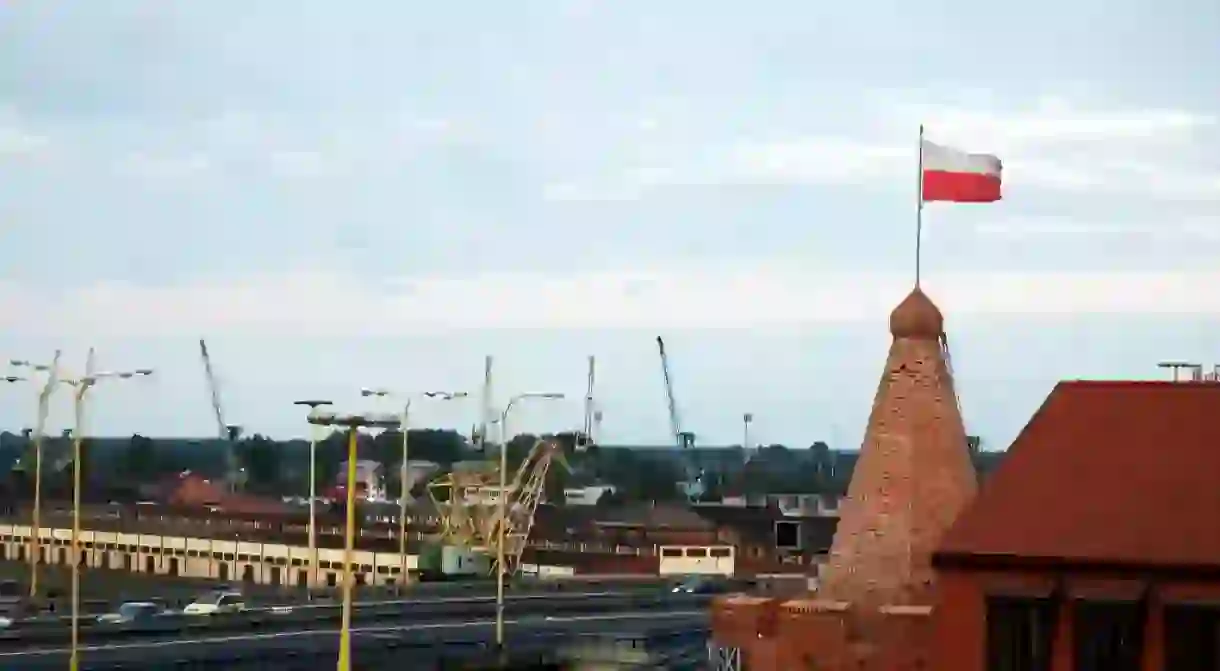Top 20 Attractions in Szczecin, Poland

Szczecin is in Poland, yet sits only a few miles from the German border. It has been an important trading port through the years. It’s a city with a large harbour which acts as a pivotal link on the overland route from Russia to France. There are no shortage of attractions for the wandering tourist either, here is our top 20 countdown.
Wały Chrobrego, Szczecin
Park

Pogon Szczecin Stadium
Stadium

Szczecin’s beloved local football team, Pogon Szczecin, represents the city in the Polish Ekstraklasa (top flight). The team plays in blue and red colours at the impressive and old-school stadium Stadion Miejski im. Floriana Krygiera. The club has twice been runner-up in the league and three-times runner-up in the Polish Cup. Tickets are easy to come by for most matches, there is a club shop and you can visit on a non-match day if you just want to see the stadium.
Szczecin Philharmonic Orchestra
Building

Center for Contemporary Art ‘Trafostacja Sztuki’
Art Gallery

Cathedral Basilica of St. Jacob, Szczecin
Cathedral, Church

Bulwar Piastowski, Szczecin
Park
Central Cemetery, Szczecin
Cemetery

Café 22, Szczecin
Cafe, Polish

Jan Czekanowski Monument, Szczecin
Memorial

A monument of Jan Czekanowski sits at General Władysław Anders Square. Jan was a Polish anthropologist, ethnographer, and linguist who played a part in saving a number of Polish-Lithuania Jews from death during the Holocaust.
The Old Town Hall and Historical Museum of Szczecin
Building, Cinema, Museum

Jasne Błonia And Park Kasprowicza, Szczecin
Park

The Pomeranian Ducal Castle And Tower of Seven Mantles, Szczecin
Building

Różanka Rose Garden, Szczecin
Botanical Garden

This elaborate rose garden in Szczecin, Różanka covers two-hectares and dates back to 1928. In 1935, the Bird Well was built which includes the quirky sculptures of flying geese by Kurt Schwerdtfeger. The garden has exotic trees and shrubs and makes for a pleasant stroll.
National Museum of Szczecin
Museum

Museum buffs will enjoy the National Museum of Szczecin, which is one of six museums in the city included in the government’s listings. Housed in an elaborate and significant building down near the Wały Chrobrego boulevard, this is mostly a maritime museum dedicated to the city’s shipping importance and history.
Technology and Transport Museum, Szczecin
Museum

The Technology and Transport Museum in Szczecin traces the history of Polish transport. Inside, you can see vintage cars and bicycles. The museum has been in operation since 1919 and also features wartime vehicles. There are some very rare and special vehicles inside and lots of information on the development of Polish public transport through the years.
Bismarck Tower, Szczecin
Building

Bismarck Tower is living proof of the German times in this city. It was built between 1913 and 1921. It can currently only be admired from the outside because the main entry is fully sealed off. Restoration work may be happening soon; it is however an interesting building for history buffs.
Port of Szczecin
Building

Szczecin is a famous city for trade. But it’s not just the train route for freight that is significant here. Szczecin’s port provides an important gateway between Poland and the rest of the world, particularly nearby Scandinavia. The port here is a deep-water harbour where a (now defunct) shipyard once was. These days, between 2,000 and 3,000 ships pass through the port every year. It is jointly managed along with the port of Świnoujście. Tourists can watch the boats come and go.
Dąbie Lake, Szczecin
Natural Feature

For a glorious sunset and a sign of nature in such a big, industrial city, head to Dąbie Lake. You can watch boats sail in, local fishermen at work and just escape the big city life here. Boat trips can be arranged and there are numerous nature trails that run alongside this large lake.
Church of the Sacred Heart of Jesus, Szczecin
Church

Another popular church in Szczecin is the Church of the Sacred Heart of Jesus, (Kościół Najświętszego Serca Pana Jezusa), which has an unusual shape. It is a brown concrete church with a rectangular tower and a tilted green roof. Regular services are held in this Catholic Church, which dates back to the early 18th century.
Contemporary Theatre, Szczecin
Theater

Housed in the same building as the Maritime Museum is Szczecin’s Contemporary Theatre (Teatr Współczesny). Inside, regular shows are held, mostly Polish plays and drama. The theatre has a few different-sized rooms depending on the demand or popularity. There is a cafe inside the venue, which is also open to the public for ticket sales when there are no events on (generally, during the day).













